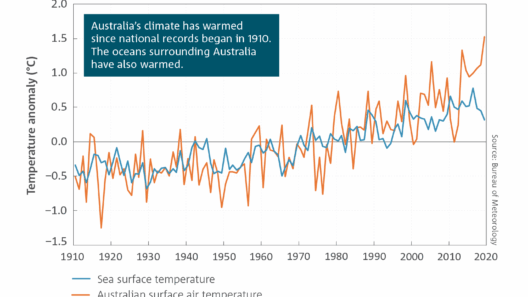The delicate balance of Earth’s atmospheric composition is a complex web, woven intricately over millennia, with various gases playing pivotal roles in its functionality. At first glance, the concept of lighter gases—such as helium, neon, or hydrogen—might seem irrelevant to the pressing crises of global warming and climate change. However, a closer examination reveals that even these ethereal, less-dense gases can have nuanced interactions within the atmosphere, affecting heat retention and climate dynamics in unexpected manners.
A traditional analogy likens the atmosphere to a blanket wrapped around the Earth. This blanket must be thick enough to provide warmth yet thin enough to allow for the essential exchange of heat and energy. The predominant gases responsible for greenhouse effects, like carbon dioxide (CO₂) and methane (CH₄), can be seen as the heavier, insulating layers of this blanket, while lighter gases resemble the wisps that provide a measure of particularity—not necessarily responsible for warmth but implicated in the broader meteorological phenomena.
To grasp how lighter gases might contribute to climate dynamics, we must first acknowledge the fundamental principles of greenhouse gas behavior. The heavier gases absorb and re-radiate heat emitted by the Earth’s surface, creating the greenhouse effect, which warms the planet. In contrast, lighter gases circulate with the atmosphere, creating a unique interplay of pressure, density, and thermal dynamics that may exert an influence on the overall greenhouse effect.
When we consider the role of lighter gases in the atmosphere, the question becomes: do they mitigate the capacity of heavier gases to trap heat? Some research suggests that certain lighter gases can act as diluents, potentially reducing the effective concentration of more impactful greenhouse gases in localized regions. For instance, the presence of hydrogen, despite its lack of greenhouse properties, can influence how other gases are dispersed and mixed in the atmosphere.
In regions where lighter gases are prevalent, such as during high-altitude phenomena, the circulation dynamics of the atmosphere can skew. These lighter gases, with their lower molecular weight, ascend more rapidly, creating areas of lower pressure that may allow for the dissipation of heat. This can result in temporary cooling effects at localized levels, demonstrating how even minuscule contributions from the atmosphere’s lighter constituents can influence broader climate conditions.
In many ways, lightweight compounds exhibit the behavior of droplets in a pond—they may fluctuate on the surface, but their presence and movement can ripple outwards, affecting their surroundings. For example, the presence of water vapor, an essential and relatively lighter component of the atmosphere, is directly correlated with temperature. Water vapor, though it is not light like helium, can perpetuate cycles of condensation and evaporation that ultimately play critical roles in cloud formation and precipitation. These processes can either exacerbate or alleviate warming trends depending on regional conditions.
Further, lighter gases can also act as tracers for atmospheric processes, providing critical insights into the behaviors of greenhouse gases. By examining the dispersion of gases such as nitrogen and argon, scientists can glean information about atmospheric circulation patterns that influence climate dynamics. The implications of this knowledge are profound, especially for predicting local and global climate effects and crafting informed mitigation strategies against climate change.
However, it is imperative to delineate between the effects of lighter gases and heavier greenhouse gases. The primary drivers of global warming remain the increasing concentrations of CO₂ and CH₄, products of anthropogenic activity that have reached unprecedented levels. Understanding the contribution of lighter gases should not distract from the more pressing issue of reducing emissions of these potent greenhouse gases.
Yet, even amid the mounting challenges posed by global warming, the unique appeal of studying lighter gases yields intriguing possibilities for scientific advancement and environmental stewardship. The field of geoengineering, for example, explores how the manipulation of atmospheric constituents, including lighter gases, could theoretically mitigate climate impacts. While concepts like solar radiation management raise ethical and practical considerations, they illustrate how multifaceted our approach to climate solutions must be, standing at the intersection of innovation and environmental ethics.
Moreover, it is crucial to advocate for comprehensive atmospheric monitoring that identifies changes in composition due to human activities. With burgeoning technologies enabling high-resolution atmospheric assessments, researchers are now able to scrutinize the role of various gas types, including lighter constituents, with unparalleled precision. Such extensive data can inform policies aimed at regulating emissions and enhancing carbon capture strategies.
In conclusion, while the immediate task of combating global warming may shift our focus to heavier greenhouse gases, the exploration of lighter gases in the atmosphere unveils a broader narrative. These lighter elements, often ignored, contribute to the intricate dance of climatic systems. By understanding their potential roles, recognizing their interplay with greenhouse gases, and leveraging new technologies, we can carve pathways toward a more resilient planetary future. Our atmosphere, like a well-orchestrated symphony, depends on each instrument, no matter how delicate, being in harmony with the others. Only then can we hope to harmonize our efforts in addressing the specter of climate change.






